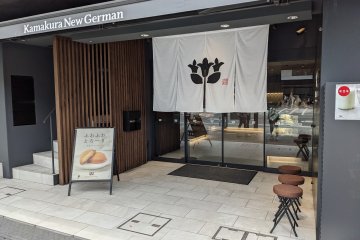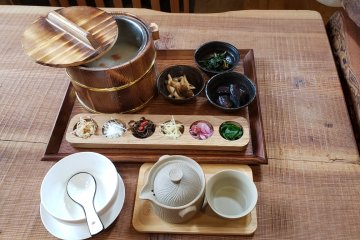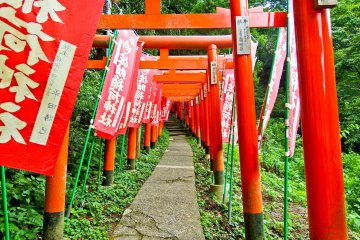
Zeniarai Benzaiten Ugafuku Shrine, popularly known simply as Zeniarai Benten, is a Shinto shrine in Kamakura, Kanagawa, Kanagawa prefecture, Japan. In spite of its small size, it is the second most popular spot in Kamakura, Kanagawa prefecture after Tsurugaoka Hachiman-gū. [Wikipedia]


品嚐過 Aratama 著名的炸豬排後,你一定會愛上這種新鮮的味道。 除了炸豬排之外,餐廳還提供了多樣的選擇。 你一定要嚐嚐 Aratama 的其他菜餚,如馬蘇里拉芝士炸肉餅和奶油炸肉餅。

Ki to Toki 使用不含動物成分的產品、糙米和當地採購的新鮮蔬菜,製作出精湛的素食餐點,不僅美味更賞心悅目。 一定要嘗試他們的 17 種不同菜餚和發酵飲料,搭配餐後的甜點、香草茶或咖啡。

Sasuke Inari Shrine is a Shinto shrine in Kamakura and the site of the Hidden Village of Kamakura. It is located very near the Zeniarai Benzaiten Ugafuku Shrine. [Wikipedia]

Tokeiji, a Rinzai-sect temple of Zen Buddhism, is a branch temple of nearby Engakuji, which is a short 5-minute walk away. This important temple/nunnery was founded in 1285 by the wife of regent Hojo Tokimune as a sanctuary for women who were abused by their husbands. In a time when women could not legally divorce, Tokeiji offered them a three-year training program in return for an official divorce. The temple’s right to issue divorces was revoked in the early 1870s and its time as a nunnery ended in 1902. Up until 1902, men were strictly forbidden from entering the premises. Today, all visitors are welcome, and the temple is known for its beautiful flower gardens from summertime hydrangeas to wintertime plum blossoms. The relatively small complex features multiple structures, including an entrance gate, a bell tower, tea houses, a treasure house, and a main hall. The treasure house holds Buddhist artifacts, as well as lacquer work from past nuns; and the main hall enshrines a seated statue of Shaka Nyorai, the principal image of the temple. Join the temple for early morning zazen meditation, which is held every Sunday.

Kotoku-in is the more common name for Taiizan Kotoku-in Shojosen-ji in Kamakura, Kanagawa Prefecture. This Jodo-shu Buddhist temple is known for its Daibutsu, or great Buddha, which is one of the most famous icons of Japan. The statue, commonly known as the Kamakura Daibutsu (Big Buddha of Kamakura), is a colossal copper image of the Amitabha Buddha. The Buddha, which was declared a national treasure by the Japanese government, is about 11.3 meters high and weighs about 121 tons. The Kotoku-in belongs to the Jodo sect, a traditional Buddhist sect founded by the priest Honen (1133-1212) who was a follower of Amitabha. According to the Jodo sect's belief system, all people are equal and one only has to sing the "Nenbutsu" to receive the protection of Amitabha and to be reborn in one's "pure land".